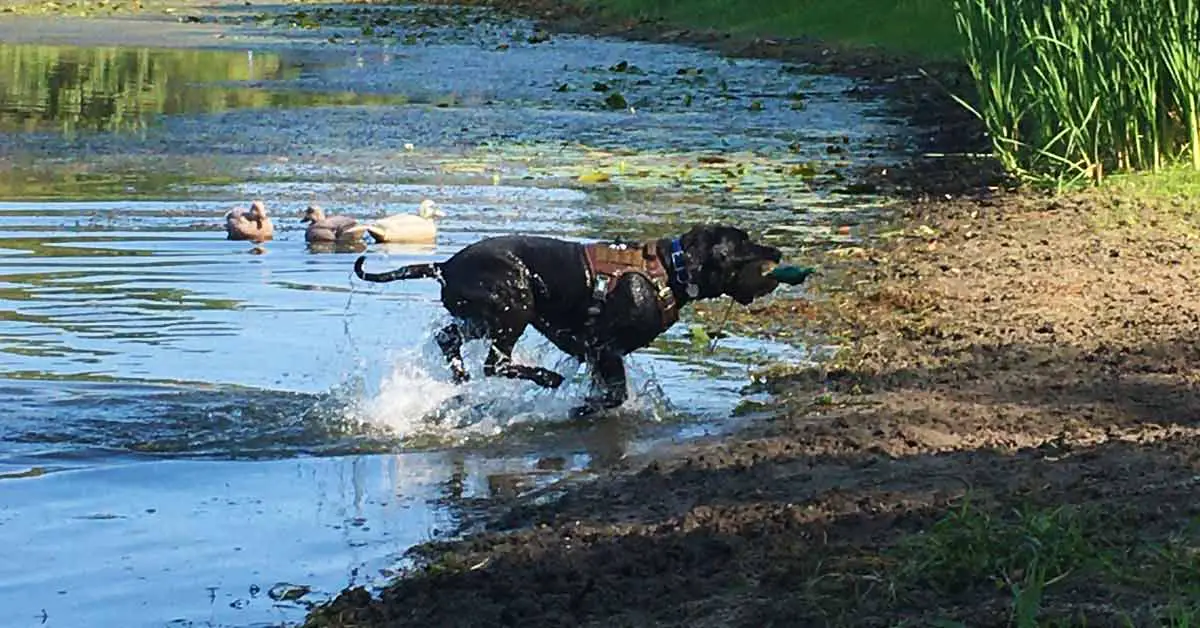Several years ago, I got into reading books written by Malcolm Gladwell. No, he’s not a retriever trainer, but rather studies and researches cultural phenomena. One of his books was titled, “Outliers”. In this book, Gladwell described his theory of 10,000 hours. Basically, he gives many examples of people who do things far above the ordinary. Were the Beatles really an overnight success? Did Bill Gates really rise from nothing to build Microsoft? What did these phenomenally successful people have in common?
Gladwell argues that success is tightly married to opportunity and time on task. He states that it takes approximately 10,000 hours to master something. Do his reflections on achievement have any implications for an amateur retriever trainer?
I have had the opportunity to see many people attempt to engage their dog in retriever work. Each year in August, our Four Points Retriever Club works with Kinetic Dog Food at Game Fair in Anoka, Minnesota. The members of Four Points put on a charity event named “Fetch-A-Cure” where people run their dogs on a timed water mark where the dog must run down a hill, swim out and pick up the mark, and then return back to the point of origin. The fastest dog each day receives a prize and the fastest from each of six days compete at the end of the event for the overall grand prize. I bring this event up not because of the best dogs, but rather because of the dogs that struggle.
We see many dogs that cannot simply go get the mark and return with it. They do many odd and peculiar things. Some dogs get lost on their way down the hill and just go play around in the water (or never even make it to the water before they are totally distracted). Some dogs will make it to the mark out in the water, but never get the bumper back to shore. Other dogs get the bumper back to shore but drop it and go play around on the hill. Many different odd things happen, but the typical comment from the owner/handler is, “well, they never do that at home”.
What do people do at home with their retrievers? Well, they retrieve tennis balls in the backyard, and that’s about it. Have these people even scratched the surface of the 10,000-hour principle? These people deeply and truly love their dogs, but what have they done to build the skills needed to make even basic level retrieves? However, do they really need to put in 10,000 hours of training?
I do not believe the goal they have for their dog is to be a completely finished retriever. They want a dog that is a great companion and house dog that can also do a little basic retrieving. So what’s missing? Routines and practice.
Having a retriever that can actually retrieve must become a way of life. Sending your dog off to spend six months with a professional trainer isn’t an option for almost everyone. However, spending 15 minutes a day working on steadiness, heeling, and marking is an option most people can work into their schedule (you can even integrate heeling and steadiness in twice a day when you feed your dog). Those 15 minutes may be the best 15 minutes of your entire day. I can pretty much guarantee it will be the best 15 minutes of your dog’s day.
There are many people that are not sure what they should, or should not, do for those 15 minutes. My first recommendation is to find a local retriever club and ask them for advice. Every retriever club I know of is more than willing to assist beginning dog handlers. Secondly, the internet has become a rich resource for DIY retriever training. There are many good professional trainers that have free access to well-made YouTube videos available (I don’t want to show my bias by naming any that I prefer). Start with basic obedience drills you can do on a regular basis. Look for drills you can do either by yourself, or with others (it can be useful if you have a significant other, children, or neighbors that can throw marks for you).
You don’t have to spend 10,000 to have a good dog, but if you can spend 15 minutes a day for 6 days a week (that adds up to 1.5 hours per week, or about 75 hours per year) you can have a dog you are very happy to have with you in your house, in your yard, and in the field. If I’ve learned one thing, a tired dog is a happy dog. These 15 minutes a day will give your dog the opportunity to be tired on a regular basis.
 About Paul: Paul Agranoff is a member of Team Kinetic, an avid hunter and Retriever trainer, and the Central Region Director for the North American Hunting Retriever Association (NAHRA). You can view his full bio on his Team Kinetic page.
About Paul: Paul Agranoff is a member of Team Kinetic, an avid hunter and Retriever trainer, and the Central Region Director for the North American Hunting Retriever Association (NAHRA). You can view his full bio on his Team Kinetic page.
27
FEB
2023
